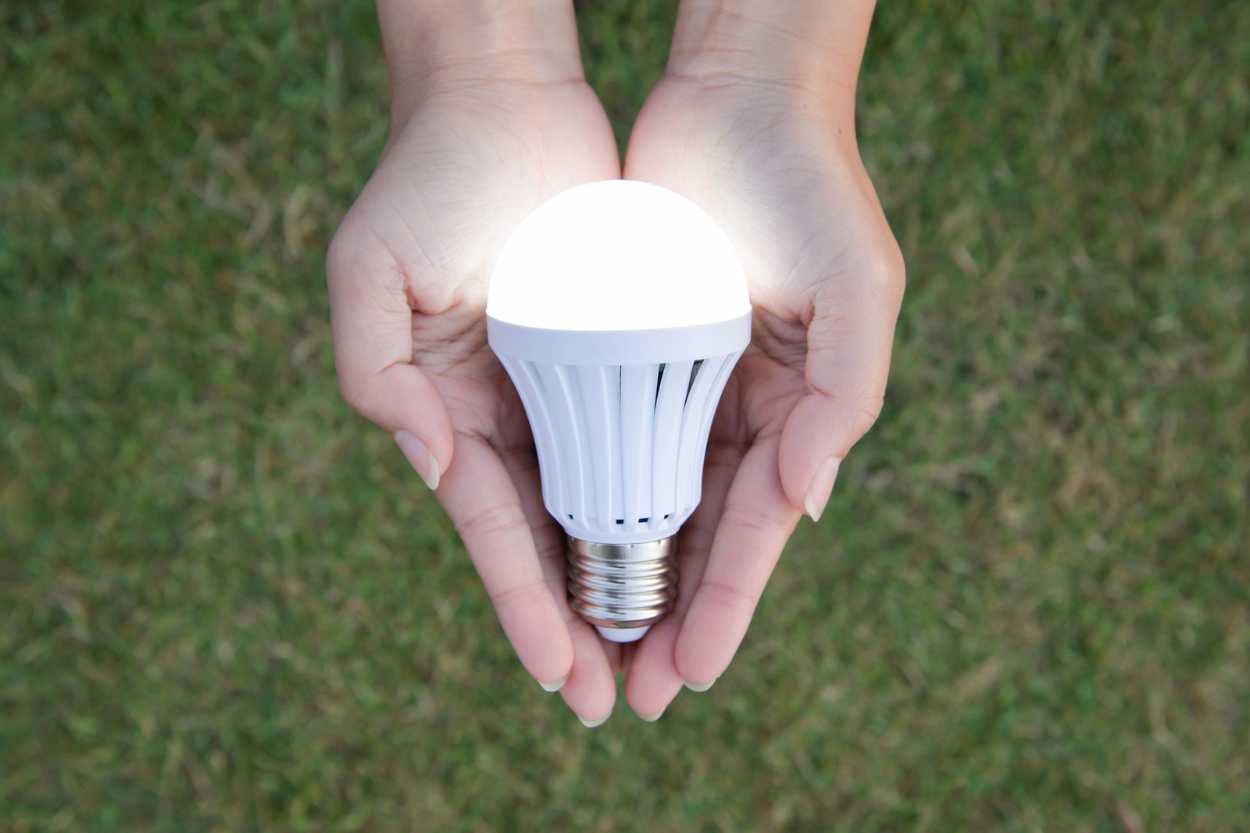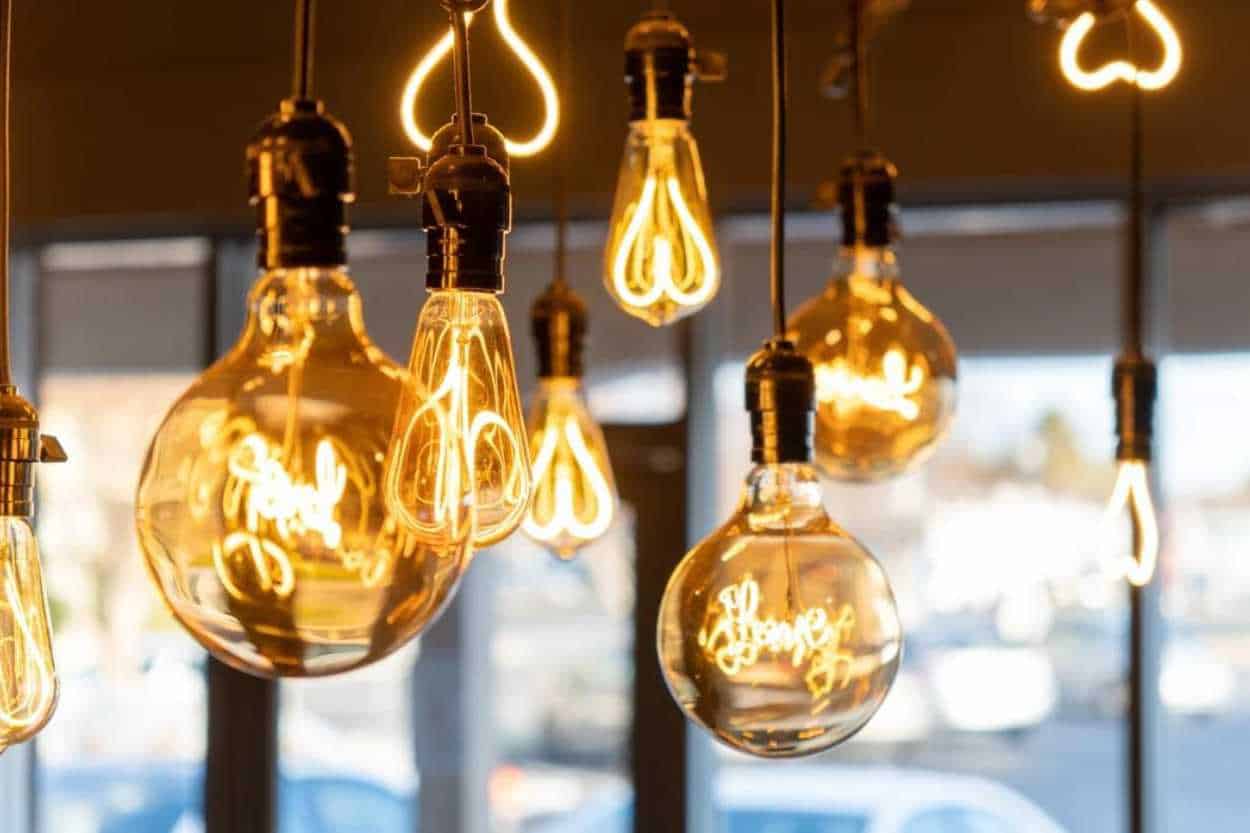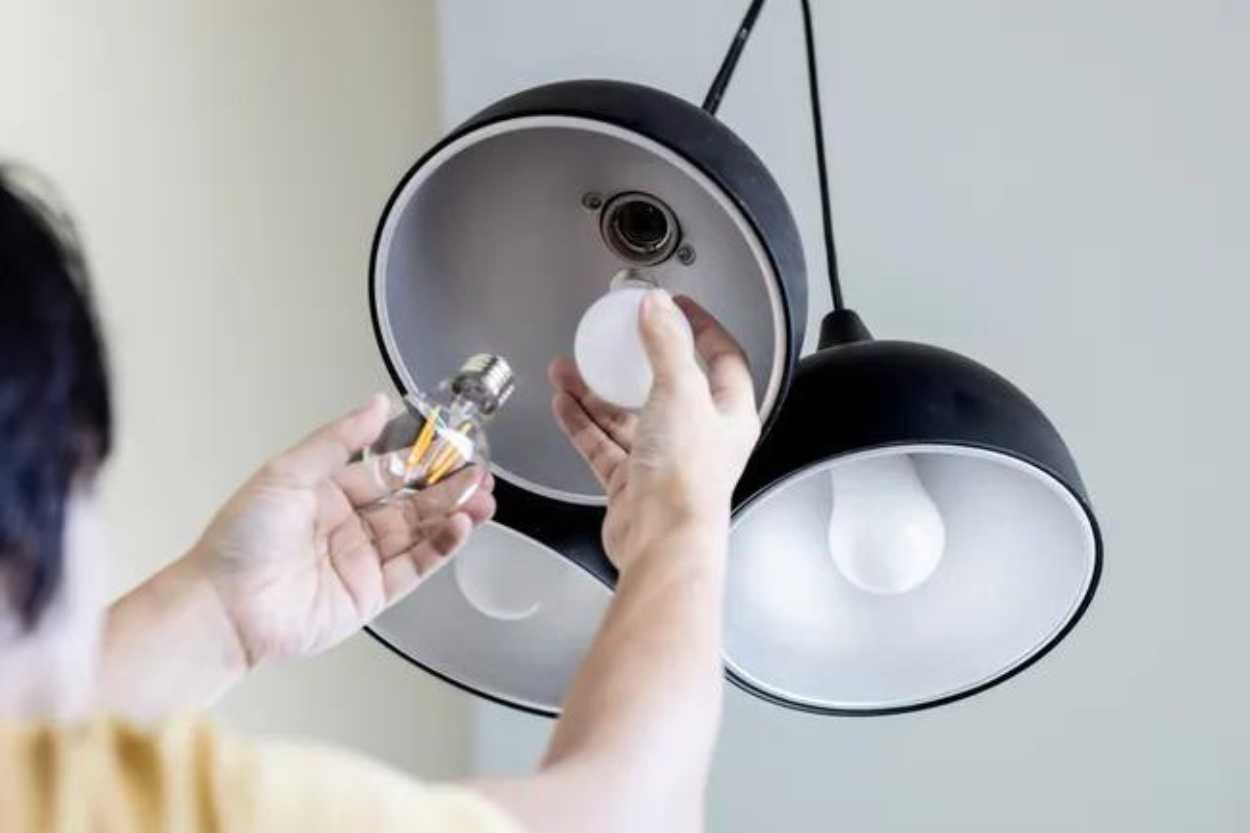LED lights are an amazing addition to homes. They are brighter and more convenient for certain places than standard halogen lights, but do they produce heat? Learn all about it in this article.
Do LED Lights Heat Up?
There is this common misconception that LED lights do not produce heat. If you touch an incandescent lightbulb that has been turned on for a few hours, it will be hot. However, if you touch an LED bulb, it will usually be cold.
However, This does not mean that LED lights do not produce heat. To understand this better, let’s compare a standard, incandescent bulb, and a LED lightbulb in terms of their heat-producing properties.
How Much Heat Do The Incandescent Lights Produce?
Incandescent lights are the most common ones in the majority of households, or at least they were until recently. To know how they produce heat, you need to know how they actually work. The incandescent lightbulb has a filament inside – that wire that you can see if you look closely at it.
When the lightbulb is turned on, the electricity heats up this filament to very high temperatures – more than 2000 degrees Celcius. This filament then produces visible light which is the important part for us.
Only five percent of the energy in this process is converted to light – the remaining 95% is heat and infrared radiation. This is quite wasteful; for a device primarily designed to produce light, using 95% of energy for non-light processes is inefficient.
This is why incandescent lightbulbs are very hot to the touch, posing a serious fire hazard. You are not supposed to put anything over them as any cloth or similar material can catch fire very quickly. Not only that, but the whole electricity circuit in your home can get seriously damaged and it may cost a lot to repair.
How Much Heat Do The LED Lights Produce?
LED stands for Light Emitting Diode, and the name itself hints at how these lights work. LED lightbulbs produce light with the help of electricity passing through the semiconductor in them. This process releases photons, which are basically the lights that we see when we turn on the lightbulb.
Throughout this process, around 40-80% (depending on the manufacturer) of the energy is converted to light, while the rest converts to heat. This is the reason LED lights are much more efficient than standard incandescent lightbulbs. They serve their purpose better and are much more friendly to the environment.
The aforementioned is also the reason for LED lights not being hot when you touch them. The energy is converted to light and the rest does not emit infrared radiation as incandescent lightbulbs do. If you touch an LED lightbulb, it can be warm at most, and it usually happens with cheaper, less efficient products.
Do LED Lights Heat Up A Room?
LED lights produce very little heat, as explained above. This is why you cannot expect LED lights to heat up a whole room unless maybe every part of the room is covered with them. Even then there probably wouldn’t be enough heat generated for you to feel the warmness of the LED lights throughout the whole space.
If you are wondering why your room is inexplicably hotter, look for some other reasons. LED lights are so efficient that it is nearly impossible to feel the heat they emit even in the smallest of spaces, like terrariums, let alone a whole, big room.
Is It Normal For LED Lights To Get Hot?
If you notice your LED lightbulbs or strip lights getting hot, it may cause concern. In most of the cases, there is no need for that. As mentioned, different manufacturers produce LED lights with various efficiencies. If your LED lightbulb is on the less efficient side, it may get a bit warmer to the touch because it means that the bulb produces more heat than some other, better LED lights.
Another possible reason for LED lights getting hot is their improper installation. LED lights shouldn’t be installed in enclosed fixtures, which are fixtures that are closed off in a way that proper ventilation becomes impossible. This not only makes your LED lights hotter but also decreases their efficiency over time.
LED lights operate best at colder temperatures, up to around 40 degrees Celsius (104 degrees Fahrenheit). Anything above makes them not only makes your LED lights hotter but also decreases their efficiency over time.deteriorate faster over time, which means that you need to buy new lights more quickly than usual. If you suspect this happening, contact your electrician so they can properly and safely install your LED lights.
How To Reduce Heat From LED Lights?
If your LED lights seem too warm or hot, you might wonder how to reduce their heat output. Here are some of the ways you can do that.
Choose High-Quality LED Lights
The most important thing is to choose high-quality LED lights. These are, of course, a bit more expensive than the regular lights in stores, but they are so much worth it. First, you can expect them to be functional for up to 50,000 hours, and some manufacturers claim that their products can last for twice as many hours!
If you use the light for 10 hours per day, it can easily last for 10-15 years and even more. To compare, a standard incandescent lightbulb can last for around 1000 hours, which is only 2-3 years for the same amount of hours per day. Not only will it be worth it financially, but you also won’t even have to think about replacing it anytime soon.
Second, high-quality LED lights have heat sinks and they are more efficient than the cheaper options. This means that they won’t heat up and therefore their quality will not decrease over time.
Proper Installation
If you have used standard incandescent or halogen lightbulbs for a long time, and now you want to switch to LED lightning, it’s best if you contact an electrician or a certified specialist to do so. Installing LED lightbulbs is not complicated, but they do require proper installation to avoid heating up or decreased lifespan. You can consult an electrician on the best manufacturers, the cost vs. benefit of certain lightbulbs, and how to safely connect them to the electricity.
Cool The Room
Remember that the LED lights function best when they are placed in a colder environment. They do not operate well at high temperatures as incandescent lightbulbs do. They should work well at up to 60 degrees Celcius, but work best at temperatures lower than 30-40 degrees.
If you notice that the lifespan of your LED lights is not as long as it should be, it may be due to the very hot weather or the high temperatures of the room they are placed in.
There is not much to do in this case except to cool the room by using an air conditioner or opening windows more often. This is also not unnecessary because even at high temperatures, LED lights should work for much longer than incandescent or halogen lightbulbs.
Safety Protocol For LED Lights
All this taken into account, it is best to always keep safe, regardless of how hot (or not) your LED lights are to touch. Here are some of the safety requirements you should follow even with high-efficiency lights like LED lights.
Don’t Cover LED Lights
This is the number 1 rule that applies to all types of lighting. Do not cover your LED lightbulbs, lamps, or LED strips with any type of cloth. Even if you are 100% sure that your LED lights are operating well and that they are not cold to touch, you never know what can happen in a moment, so just avoid doing this altogether.
Follow The Instructions
When connecting your new LED lights to the electricity, make sure to always follow the specific instructions the manufacturer provided. Even if you have already done this in the past, it’s always a good idea to double-check and see if any of the steps have changed. Something that applies to the installation of any type of lightbulbs is that you need to turn off the electricity before placing them in the fixture, so don’t forget to do that.
It doesn’t hurt to repeat this – if you are not sure how exactly to install or use the LED lights, contact a person who will do it for you or help you with it. It is much less trouble to do that than to risk your safety and the safety of those around you.
Summary
LED lights are an awesome device for the brighter, more colorful environment in your home. While they are much more efficient than the lightbulbs we’ve used for decades before, they still do produce heat and you should always follow the safety protocol that applies to all the lightbulb types.





